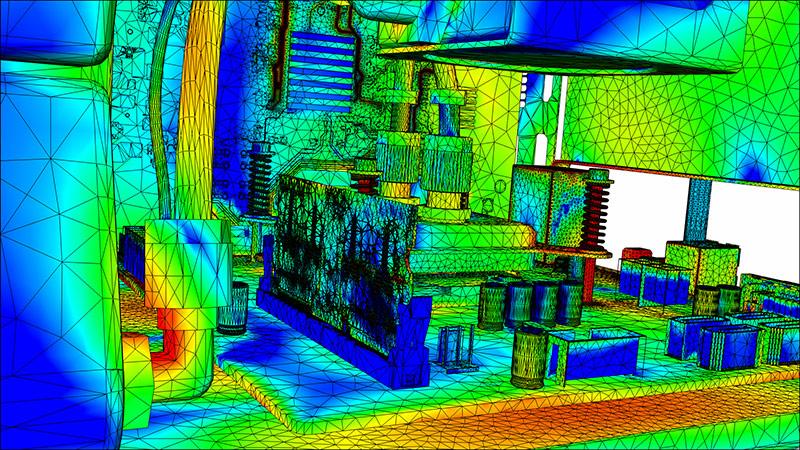Ansys R1 Electronics Release | Webinar Overview:
Looking for the newest innovation in electronics across the industry? Join us as our team of engineering experts walk through new feature updates for the Ansys R1 Electronics Release. Focus areas include: Ansys Maxwell & Ansys HFSS, Ansys Icepak and Ansys Sherlock.
In this Ansys R1 Electronics release update presentation, three of our application engineers will share their favorite new features and updates to the software which will help you capture more details in your simulations while getting it done faster and with higher accuracy.
With Ansys electronics, you can learn how your products will behave by optimizing design via simulation rather than prototype building and testing, which is expensive and time-consuming. You will design superior products — circuit boards, computer chips, cell phones, electronic components in cars, Internet of Things (IoT), antennas or even a communication system — with Ansys software.

Discover New Engineering Viewpoints with the Most Recent R1 Electronics Release
Engineering teams can cut through complexity to create the next wave of goods that will change the world thanks to Ansys’ release of R1. The complexity of system integration challenges has increased, forcing enterprises to grow and cooperate like never before.
Solutions in Cross-Disciplinary Engineering
We combine an unprecedented array of new capabilities, performance enhancements, and cross-discipline engineering solutions. These innovations in electronics provide visionary leaders the ability to carefully analyze creative designs. In addition, spanning the scope of simulation from various angles, in order to accurately predict product performance under real-world conditions.
Innovation in Electronics Fueled by Data-Driven Insights
We offer businesses the tools they need to properly comprehend each aspect of system-level performance. In addition, encouraging users of Ansys simulation products to seek cutting-edge solutions to enhance their respective businesses.
Previously, engineering difficulties that exponentially span in scale and multi-physics, were believed insurmountable. However, when seen from the perspective, and proper application of the most recent improvements, these theoretical simulations have become reality.
“Model-based simulation is essential for evaluating and validating multiple ideas, especially given the growing popularity and complexity of electric vehicles.”
– Takashi Miyamori, Director of Toshiba Electronic Devices & Storage Corporation (Toshiba)
Additional Ansys Software Tips & Tricks Resources
-
- Analyzing normal and Tangential Elastic Foundations in Mechanical
- Why Meshing is Crucial for FEA Fluid Simulations Prior to Prototyping
- For support on Contained Fluid FEA Modeling with HSFLD242 Elements
- For Exporting a Deformed Geometry Shape Post-Analysis in Mechanical
- For guidance Multi-Step Analyses in Mechanical
- For Retrieving Beam Reaction Force in a Random Vibration Analysis
- Deploying Ansys Macro Programming vis *USE Command in Mechanical
- For replicating Fatigue Models from Start to Finish in Mechanical
- Setting up Acoustic Simulations of a Silencer
- For a step-by-step guide on 2D to 3D Submodeling in Mechanical
- For modeling Pipe16 Circumferential Stress in Mechanical
- For Support on performing ‘EKILL‘ in Workbench
- APDL Command Objects post-Spectral Analysis
- For Separating DB Database Files from RST Files
- Measuring Geometric Rotation in Mechanical WB
- Explicitly, CAD Geometry Deformation Plasticity
- Offsetting a Temperature Result to Degrees Absolute
- For general guidance on Ansys Post-Processing
- Finally, for basic Ansys Software Installation and License Manager Updates

